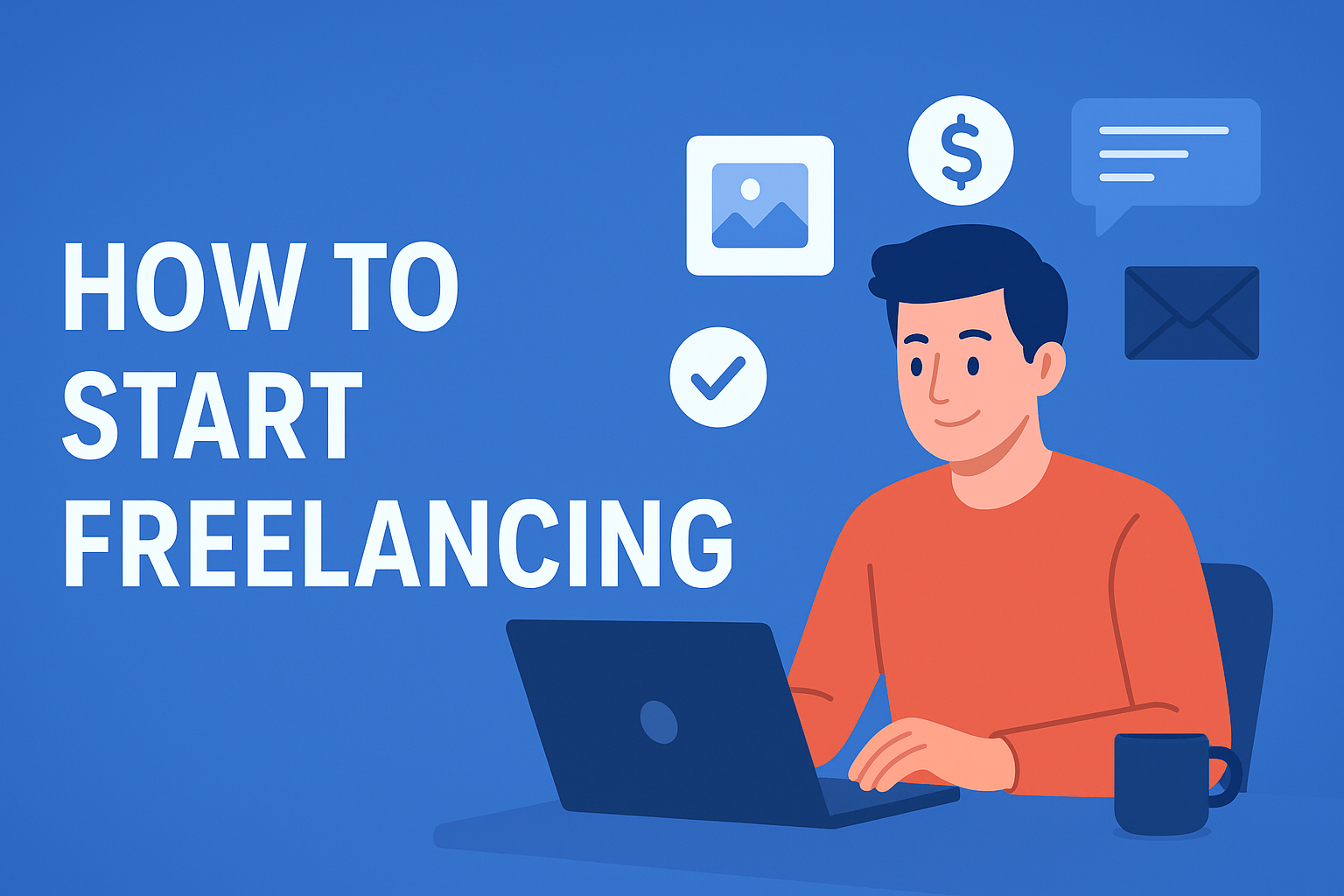In this guide, we’ll walk you through everything you need to know to start freelancing from scratch — even if you have no prior experience.
🔹 Step 1: Understand What Freelancing Is
Freelancing means offering your skills or services to clients without being tied to a single employer. You work project-by-project, usually online, and get paid per task, project, or hour.
Examples of Freelance Jobs:
- Graphic Design
- Content Writing & Copywriting
- Web Development
- Social Media Marketing
- SEO Services
- Video Editing
- Virtual Assistance
- Translation & Transcription
🔹 Step 2: Choose Your Freelance Skill
Start by identifying what you’re good at or interested in learning.
If you don’t have a skill yet — don’t worry! You can learn one online for free through platforms like:
- YouTube
- Coursera
- Skillshare
- Google Digital Garage
💡 Pro Tip: Choose a skill that’s in demand and aligns with your passion. For example:
If you love design → Try Graphic Design.
If you enjoy writing → Go for Content Writing.
If you like tech → Learn Web Development.
🔹 Step 3: Build Your Portfolio
Clients hire you based on proof of your work.
So even if you’re new — create sample projects to showcase your ability.
✅ Ways to Build a Portfolio:
- Create 3–5 demo projects
- Offer your first work for free or at a discount
- Build your own website or Behance profile to display work
- Add client testimonials once you complete real projects
🔹 Step 4: Choose Freelancing Platforms
Join top freelancing websites to find clients. Some popular options are:
🌐 Top Freelance Websites:
💡 Tip: Start small — create professional profiles, upload your portfolio, and apply for smaller jobs first to gain experience and reviews.
🔹 Step 5: Set Your Rates
In the beginning, charge a competitive rate to attract clients.
As you gain experience and reviews, increase your pricing gradually.
Example:
- Beginner Writer → $5–$15 per article
- Intermediate → $20–$50 per article
- Expert → $100+ per article
🔹 Step 6: Communicate Professionally
Good communication builds trust and repeat clients.
✅ Always:
- Reply quickly
- Be polite & clear
- Confirm requirements before starting
- Deliver on time
🔹 Step 7: Build Long-Term Clients
Once you’ve completed a few projects successfully:
- Ask for testimonials
- Offer package deals or monthly retainers
- Stay connected for future work
Consistency and professionalism help turn one-time clients into loyal ones.
🔹 Step 8: Keep Learning and Improving
Freelancing is all about growth and adaptability.
Keep updating your skills, learning new tools, and following market trends to stay competitive.
🚀 Final Thoughts
Starting freelancing can be life-changing — you can work from anywhere, on your own schedule, doing what you love.
The key is to start small, stay consistent, and keep improving.




